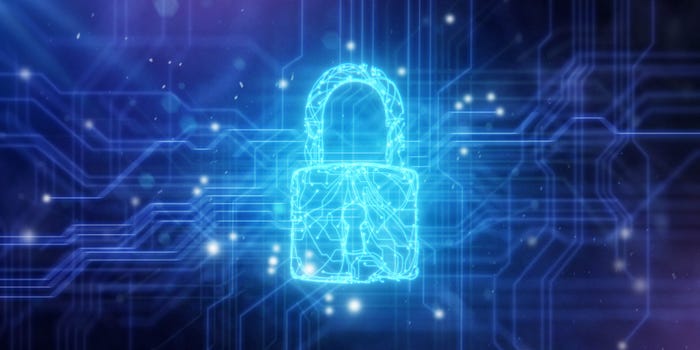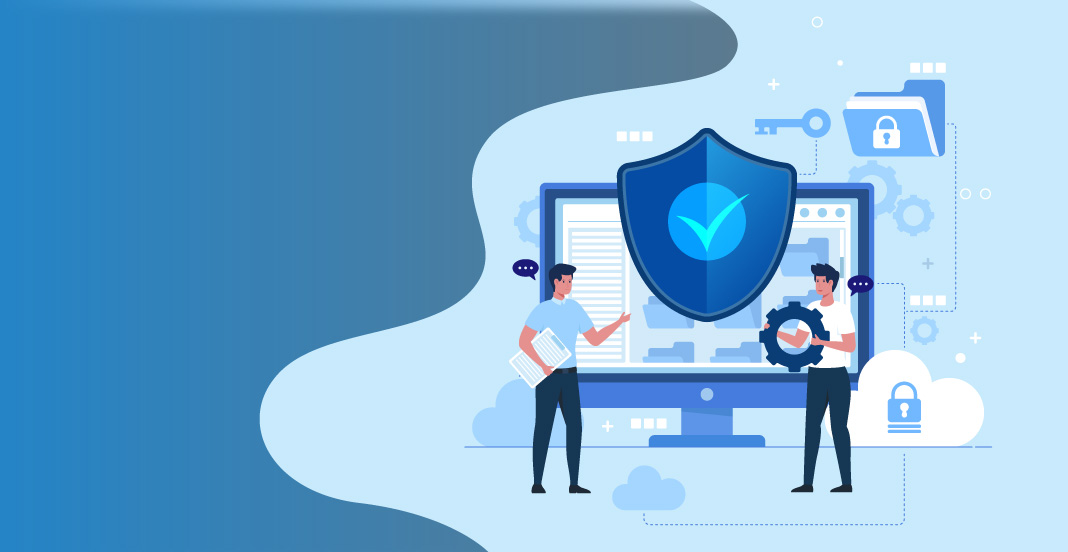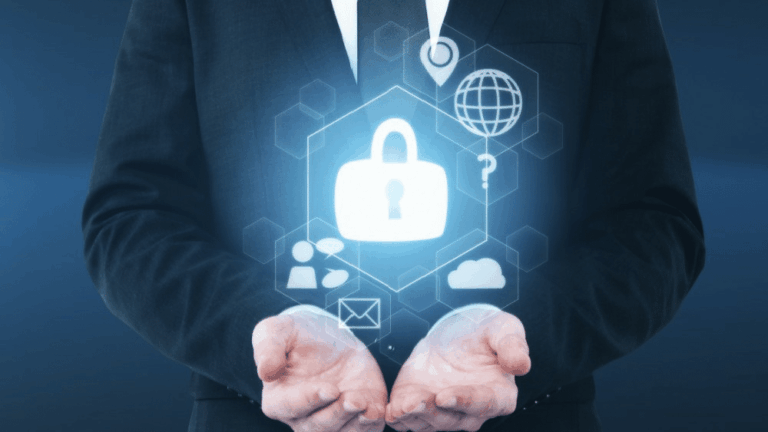In an increasingly interconnected world, where every facet of our lives, from personal communication to global finance, relies on digital infrastructure, cybersecurity has transcended being a mere IT concern to become a critical pillar of national and economic security. The relentless evolution of cyber threats, from sophisticated nation-state attacks to pervasive ransomware campaigns and intricate phishing schemes, necessitates a continuous and rapid innovation in defense strategies. This article offers an exhaustive examination of the contemporary cybersecurity landscape, exploring the dynamic nature of cyber threats, the foundational principles of robust defense, the cutting-edge innovations driving our protective measures, the profound impact on various sectors, and the perpetual challenges and future directions shaping this vital field.
The Cyber Threat Landscape

The digital realm is a constant battleground, with adversaries employing diverse tactics to exploit vulnerabilities. Comprehending the nature of these threats is the first step toward effective defense.
A. Malware Variants: Malicious software designed to infiltrate or damage computer systems.
A. Ransomware: Encrypts a victim’s files or system and demands a ransom (usually cryptocurrency) for their release. Attacks have evolved from opportunistic to highly targeted, impacting critical infrastructure and large enterprises.
B. Viruses and Worms: Self-replicating programs that spread to other systems. While older, they remain a threat, often used as initial infection vectors.
C. Trojans: Malicious programs disguised as legitimate software, often used to create backdoors for remote access.
D. Spyware and Adware: Software designed to secretly collect information about users or display unwanted advertisements.
B. Phishing and Social Engineering: Manipulating individuals into divulging sensitive information or performing actions that compromise security.
A. Phishing: Fraudulent attempts to obtain sensitive information (e.g., usernames, passwords, credit card details) by disguising as a trustworthy entity in an electronic communication.
B. Spear Phishing: Highly targeted phishing attacks aimed at specific individuals or organizations, often leveraging personalized information to increase credibility.
C. Whaling: Phishing attacks specifically targeting high-profile individuals within an organization, such as executives (CEOs, CFOs).
D. Vishing (Voice Phishing) and Smishing (SMS Phishing): Using phone calls or text messages, respectively, to trick victims.
E. Pretexting: Creating a fabricated scenario (pretext) to trick a victim into giving up information or access.
C. Advanced Persistent Threats (APTs): Stealthy and continuous computer hacking processes, often targeting specific entities for political or business motives.
A. Nation-State Actors: Governments sponsoring sophisticated attacks for espionage, sabotage, or intellectual property theft.
B. Long-Term Infiltration: APTs typically involve prolonged periods of access to a target network, allowing attackers to map the infrastructure, exfiltrate data, and maintain a persistent foothold.
C. Zero-Day Exploits: APTs often leverage newly discovered vulnerabilities (zero-days) for which no patch is yet available, making them particularly dangerous.
D. Supply Chain Attacks: Targeting less secure elements in an organization’s supply chain to gain access to the primary target.
A. Software Supply Chain: Injecting malicious code into legitimate software updates or open-source libraries. The SolarWinds attack is a prime example.
B. Hardware Supply Chain: Tampering with hardware components during manufacturing or shipment.
E. Insider Threats: Security risks posed by individuals within an organization who have authorized access to systems and data.
A. Malicious Insiders: Employees or contractors intentionally seeking to steal data, sabotage systems, or disrupt operations.
B. Negligent Insiders: Employees who unintentionally cause security breaches through carelessness or lack of awareness (e.g., falling for phishing, misconfiguring systems).
F. Distributed Denial of Service (DDoS) Attacks: Overwhelming a target system, server, or network with a flood of internet traffic to disrupt services.
A. Botnets: Networks of compromised computers (bots) controlled by an attacker to launch large-scale DDoS attacks.
B. Application-Layer Attacks: Targeting specific applications or services to exhaust resources.
Foundational Principles of Cybersecurity Defense
Effective cybersecurity is built upon a set of core principles that guide the implementation of protective measures.
A. Confidentiality: Protecting information from unauthorized access and disclosure.
A. Encryption: Using cryptographic algorithms to convert data into an unreadable format, ensuring only authorized parties can decrypt it.
B. Access Controls: Implementing mechanisms (e.g., passwords, multi-factor authentication, role-based access control) to restrict access to resources based on user identity and permissions.
C. Data Minimization: Collecting and retaining only the data that is absolutely necessary, reducing the potential impact of a breach.
B. Integrity: Ensuring that information remains accurate, complete, and authentic, preventing unauthorized modification.
A. Hashing: Generating unique digital fingerprints of data to detect any alterations.
B. Digital Signatures: Cryptographically binding a digital identity to a document or message to verify its authenticity and ensure it hasn’t been tampered with.
C. Version Control and Backup: Maintaining multiple versions of data and regularly backing up critical information to allow for restoration in case of corruption or attack.
C. Availability: Ensuring that authorized users can access systems and information when needed.
A. Redundancy: Implementing duplicate systems, networks, and data storage to provide continuous operation even if one component fails.
B. Disaster Recovery Planning: Developing strategies and procedures to recover from natural disasters, major system failures, or cyberattacks.
C. DDoS Mitigation: Implementing solutions to detect and deflect volumetric attacks, ensuring service continuity.
D. Authentication: Verifying the identity of users, systems, or devices before granting access.
A. Multi-Factor Authentication (MFA): Requiring two or more verification factors (e.g., something you know like a password, something you have like a phone, something you are like a fingerprint).
B. Biometrics: Using unique biological characteristics (fingerprints, facial recognition) for authentication.
E. Authorization: Granting specific permissions to authenticated users based on their roles or needs.
A. Role-Based Access Control (RBAC): Assigning permissions based on job functions or roles within an organization.
B. Least Privilege: Granting users only the minimum necessary access rights required to perform their duties.
Cutting-Edge Innovations in Cybersecurity Defenses

The dynamic nature of threats demands constant innovation in defensive technologies and strategies.
A. Artificial Intelligence (AI) and Machine Learning (ML) in Security:
A. Threat Detection: AI/ML algorithms analyze vast amounts of data (network traffic, logs, endpoint telemetry) to identify anomalies and patterns indicative of attacks much faster and more accurately than traditional methods.
B. Predictive Analytics: Predicting potential future attacks based on historical data and current threat intelligence.
C. Automated Response: AI can trigger automated responses to detected threats, such as isolating infected systems or blocking malicious IPs.
D. Vulnerability Management: AI can help identify and prioritize software vulnerabilities for patching.
B. Zero Trust Architecture: A security model based on the principle “never trust, always verify,” regardless of whether the user or device is inside or outside the network perimeter.
A. Micro-segmentation: Dividing the network into small, isolated segments to limit lateral movement of attackers.
B. Continuous Verification: Every access request is authenticated and authorized, even for internal users.
C. Least Privilege Access: Users and devices are granted only the minimum necessary permissions for their specific task.
C. Extended Detection and Response (XDR) and Security Orchestration, Automation, and Response (SOAR):
A. XDR: Unifies and correlates security data from multiple sources (endpoints, networks, cloud, email) to provide a more comprehensive view of threats and enable faster, more effective incident response.
B. SOAR: Automates routine security tasks and orchestrates complex incident response workflows, allowing security teams to focus on critical investigations.
D. Quantum-Resistant Cryptography (Post-Quantum Cryptography): Developing cryptographic algorithms that can withstand attacks from future quantum computers, which could potentially break current encryption standards. This is a proactive measure against a future threat.
E. Behavioral Analytics: Monitoring user and entity behavior (UEBA) to detect unusual activities that might indicate a compromised account or insider threat. This goes beyond signature-based detection to identify deviations from normal patterns.
F. Cloud Security Posture Management (CSPM) and Cloud Workload Protection Platforms (CWPP): Specialized tools for securing cloud environments.
A. CSPM: Continuously monitors cloud configurations for misconfigurations and compliance violations.
B. CWPP: Provides protection for workloads (e.g., virtual machines, containers, serverless functions) across hybrid and multi-cloud environments.
Impact Across Key Sectors
Cybersecurity’s reach extends to every sector, with innovations directly influencing their resilience and operational integrity.
A. Critical Infrastructure (Energy, Water, Transportation):
A. OT/ICS Security: Protecting Operational Technology (OT) and Industrial Control Systems (ICS) from cyberattacks that could lead to physical damage, service disruption, or even loss of life.
B. Supply Chain Resilience: Ensuring the security of the components and software that make up critical infrastructure.
B. Finance and Banking:
A. Fraud Detection: AI-powered systems detect anomalous transactions indicative of fraud in real-time.
B. Customer Data Protection: Robust encryption and access controls to protect sensitive financial and personal data.
C. Resilience to DDoS: Protecting online banking services from disruption by denial-of-service attacks.
D. Blockchain Security: Securing blockchain-based financial transactions and decentralized finance (DeFi) protocols.
C. Healthcare:
A. Patient Data Privacy (HIPAA Compliance): Strict regulations require robust encryption and access controls for electronic health records (EHRs).
B. Medical Device Security: Ensuring IoT medical devices are secured against tampering or attacks that could compromise patient safety.
C. Ransomware Protection: Healthcare organizations are frequent targets of ransomware, making robust backup and recovery essential.
D. Government and National Security:
A. Cyber Warfare: Defending against nation-state-sponsored cyberattacks aimed at espionage, sabotage, or disrupting critical government functions.
B. Information Integrity: Protecting government data and communications from manipulation or unauthorized access.
C. Election Security: Safeguarding electoral processes from interference.
E. Manufacturing:
A. Industrial IoT (IIoT) Security: Securing interconnected sensors, robots, and machinery on the factory floor from cyber threats.
B. Intellectual Property Protection: Preventing the theft of valuable design specifications and manufacturing processes.
C. Operational Continuity: Protecting against attacks that could halt production lines.
F. Retail and E-commerce:
A. Payment Security (PCI DSS Compliance): Protecting customer credit card data and online transactions.
B. Customer Data Privacy: Complying with regulations like GDPR and CCPA regarding personal data protection.
C. Bot Management: Defending against automated bots used for credential stuffing, price scraping, or inventory hoarding.
Perpetual Challenges and Future Directions
Despite significant advancements, the cybersecurity landscape presents ongoing challenges and continuous areas for innovation.
A. The Evolving Threat Landscape:
A. Sophistication of Attackers: Adversaries constantly refine their tactics, techniques, and procedures (TTPs), making it an arms race.
B. Attack Surface Expansion: The proliferation of IoT devices, cloud adoption, and remote work continuously expands the potential points of entry for attackers.
C. AI in Attacks: Malicious actors are increasingly leveraging AI for more sophisticated phishing, malware generation, and automated reconnaissance.
B. Skills Gap: A persistent shortage of skilled cybersecurity professionals globally makes it difficult for organizations to adequately staff their defense teams.
A. Automation to Bridge Gaps: Leveraging AI and SOAR to automate routine tasks can help optimize limited human resources.
B. Training and Education: Investing in cybersecurity education and certification programs to build the workforce.
C. User Education and Human Factor: Humans remain the weakest link in the security chain, often falling victim to social engineering attacks.
A. Continuous Awareness Training: Regular and engaging security awareness programs are crucial.
B. Security Culture: Fostering a strong security-conscious culture within organizations.
D. Complexity of Modern IT Environments:
A. Hybrid and Multi-Cloud: Securing data and applications across on-premise, public cloud, and multiple cloud providers presents significant challenges.
B. Legacy Systems: Older systems that are difficult to patch or integrate with modern security solutions pose ongoing risks.
E. Regulatory Compliance Burden: Organizations face a growing number of complex data privacy and security regulations across different jurisdictions (e.g., GDPR, CCPA, NIS2).
F. Future Directions in Cybersecurity:
A. AI-Driven Autonomous Security: Moving towards self-healing networks and proactive defense systems that can autonomously detect, analyze, and respond to threats with minimal human intervention.
B. Digital Trust and Identity: Developing more robust, decentralized, and user-controlled digital identity solutions (e.g., Self-Sovereign Identity) to enhance online trust.
C. Cyber-Physical System Security: Increased focus on securing the convergence of IT and OT in industrial environments, smart cities, and critical infrastructure.
D. Homomorphic Encryption: Research into encryption techniques that allow computations to be performed on encrypted data without decrypting it, greatly enhancing privacy.
E. Zero-Knowledge Proofs: Cryptographic methods that allow one party to prove they know a piece of information without revealing the information itself, crucial for privacy-preserving authentication and transactions.
Conclusion
Cybersecurity is an ever-evolving arms race, where innovation is the only constant. From grappling with sophisticated ransomware and nation-state APTs to securing the vast expanse of the cloud and IoT devices, the challenges are immense. However, the relentless development of cutting-edge defenses, powered by artificial intelligence, zero trust principles, and advanced cryptographic techniques, offers a formidable response. The profound impact of these innovations spans every sector, safeguarding critical infrastructure, protecting financial systems, and ensuring the privacy of personal data. As the digital fabric of our world continues to expand, the imperative for robust and adaptive cybersecurity will only intensify. This dynamic field is not just about protecting data; it’s about preserving trust, ensuring continuity, and securing the very foundations of our interconnected global society. The journey of cybersecurity innovation is perpetual, a testament to humanity’s ongoing commitment to defending its digital frontier.




